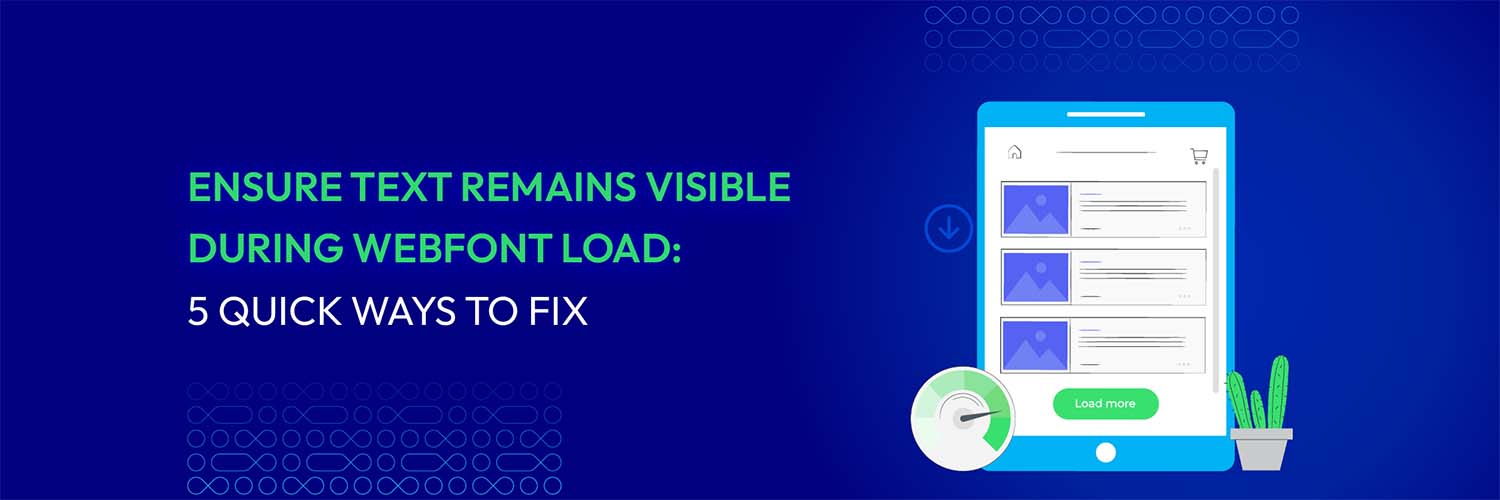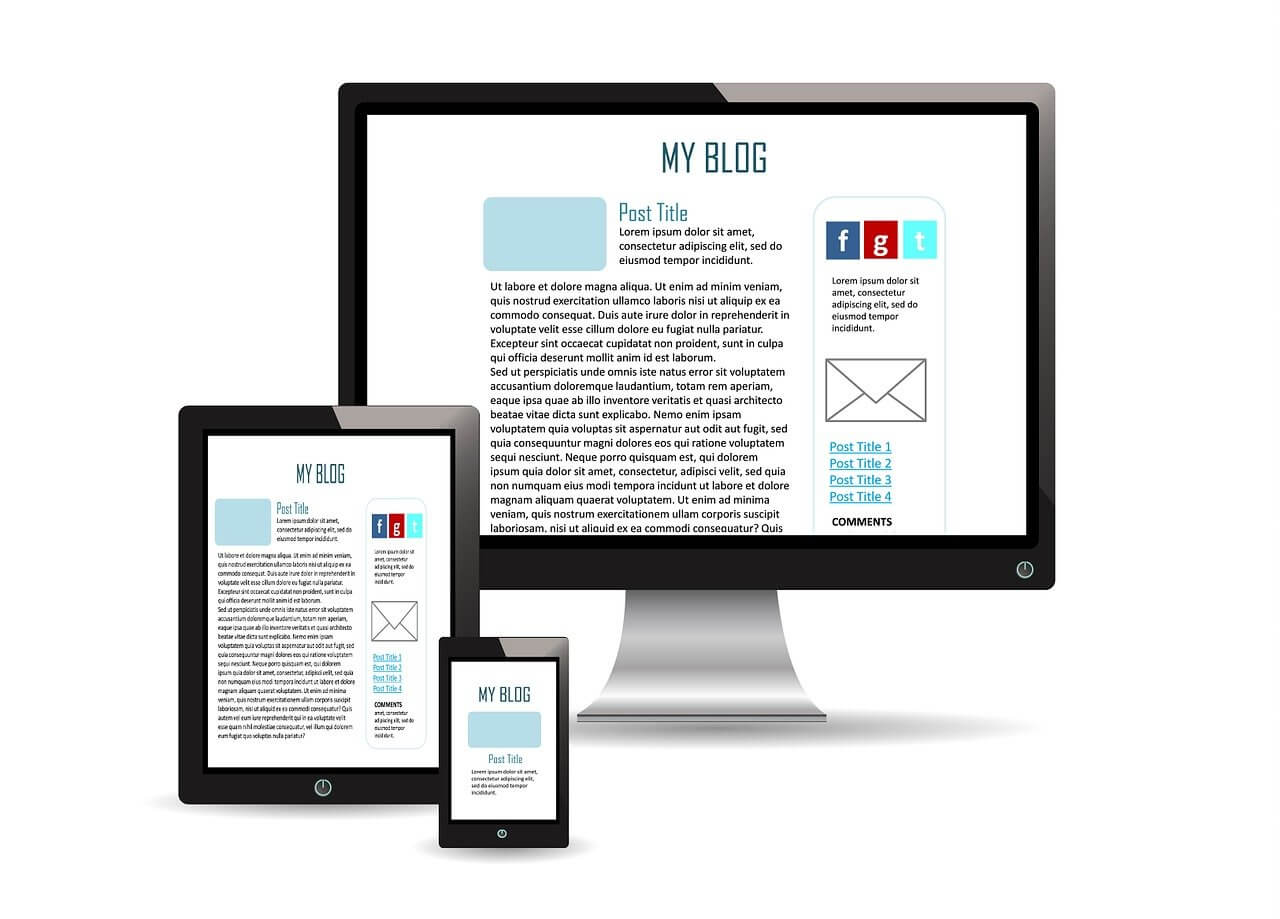Ensure text remains visible during webfont load: 5 quick ways to fix
Vinh Jacker | 07-21-2023

Selecting the appropriate typeface for web design may make or break the project. However, web fonts occasionally cause text visibility issues throughout the loading process.
In this blog, we’ll look at 5 quick and easy techniques to ensure text remains visible during webfont load, so your users have a consistent experience on your website. Prepare to improve the user experience of your website with these helpful tips!
“Ensure text remains visible during webfont load” - What does this warning mean?
“Ensure text remains visible during webfont load” is a message indicating that the text on a webpage should not be hidden, even if the webfont hasn’t been fully loaded yet. Some browsers handle this loading gap by hiding the text until the font is completely loaded. This can cause a flash of invisible text.
A flash of invisible text (FOIT) is common when web fonts are utilized on a webpage. When you open a new webpage, the browser needs to take a long time to load a web font since it must first download its relevant font files.
Normally, such fonts are not installed by default on the visitor’s machine, so the text of that web font doesn’t appear during the loading period. This case is known as a flash of invisible text (FOIT).

If you have a poor internet connection, FOIT can happen since it takes longer for the browser to download the web font or when numerous web fonts are used on a webpage.
Impact of webfont load on performance
Webfont load can affect a website’s performance since it takes a while for the webfont to be ready. Here are some impacts that need to be considered:
Influencing User Experience and the conversions
Nobody enjoys seeing a blank page when trying to browse a website. When the text doesn’t appear as the visitor enters the website, it will frustrate them, and they may leave the site and never return.
The content on a website is significant for users since it indicates in a few seconds whether the site contains the needed information. If the text is invisible, it will lead to a poor user experience. The users might get upset, especially when the text shows essential information such as call-to-action buttons, navigation links, etc.
Affecting the PageSpeed Insights score
PageSpeed Insights score is a tool that measures a website’s performance on both mobile and desktop devices. Webfont load can also have an undesirable impact on the performance score on the Google PageSpeed Insights report.

When webfonts are used on a page, they must be downloaded and rendered, which increases the page’s loading time and lowers its PageSpeed Insights score.
Worsening first contentful paint and largest contentful paint (Core Web Vitals) grades
First Contentful Paint (FCP) and the Largest Contentful Paint (LCP) grades are part of Google’s Core Web Vitals metrics. They influence a webpage’s end-user experience, such as how fast it loads and responds to user interaction.
The FCP measures the time it takes for the first content to appear on a webpage, whereas the LCP measures the time it takes for the largest content element to appear. These two metrics indicate a website’s loading speed and user experience.
Webfonts that are not correctly optimized might increase the loading time of a webpage, resulting in a slower FCP and LCP. This can have a detrimental influence on a website’s Core Web Vitals grades, which in turn can impact its search engine rankings and general user experience.
Impacting the Cumulative Layout Shift Grade (Core Web Vitals)
Cumulative Layout layout shift (CLS) grade, another Core Web Vitals metric that measures the visual stability of a webpage during loading, can also be affected by webfont load.
When webfonts are not optimized, they might create layout shifts on a webpage, lowering the CLS grade. If the content on a webpage moves around abruptly while loading, it can be extremely confusing and annoying for users. Ensuring text remains visible while the web font loads can go a long way in preventing unexpected content moves (without user interaction).
Why does text disappear during webfont load?
Text disappearing during webfont load can be attributed to numerous reasons, here are some culprits behind this issue:
-
Slow internet connection: A poor internet connection can cause the browser to take longer to download the webfont, which can cause text to disappear or flicker throughout the loading process.
-
Large webfont files: Large font files may take longer to download and render, which results in text disappearing or flickering while loading.
-
Browser caching issues: When the browser cache is not configured properly or full, the text will likely disappear during webfont loading.
-
Conflicts with other website elements: Website elements, such as JavaScript or images, can be at odds with font format, which causes invisible text during webfont loading.
Webfont loading allows website designers to utilize custom simple free fonts not loaded on the user’s device on their website. When a user visits a webfont-enabled page, their browser downloads the font files from the website’s server and uses them to display the text on the page.
CSS and the @font-face rule, which specifies the font family, font source, and font format, are frequently used to load webfonts. When the user’s browser encounters the @font-face rule, it will download the font files and save them in a cache for future use.

If the webfont is not loaded or applied successfully owing to an error, the text on the web page may be shown incorrectly or as blank space. This is known as “text disappearance during webfont loading.”
Understanding how webfont works can help you take a closer look at why text disappears during webfont loading.
5 Techniques to ensure text remains visible during webfont load
Using a system font stack as a fallback option
A system font stack is a collection of font families commonly available on all devices, including desktop computers, laptops, and mobile devices. Using a system font stack ensures that text is displayed on the website even if the web font fails to load.

However, there is a tradeoff for this. Using system fonts means you have to accept the unattractiveness of the fonts provided by the system. Yet, this is all subjective because it all depends on your preferences and the webpage content on your website.
But don’t hesitate to adopt this option because it will help ensure text remains visible during webfont load regardless of the unappealing typefaces.
Using font-display to control the font loading behavior
The font-display property is a CSS attribute that allows you to change how the browser handles online font loading. The font-display property specifies how the font should be displayed while loading and after loading.
The font-display property can take the following values:
-
auto: The default value, the browser will use its default behavior for font loading.
-
block: The browser will block text rendering until the font has finished loading. If the font takes a long load, this can result in a blank space or a flash of unstyled text (FOUT).
-
swap: The browser will display a fallback font while the web font is loading, then swap in the web font when it’s ready. This is a smart choice if you want to ensure that the text remains visible during the font-loading process.
-
fallback: The browser will use a fallback font if the web font fails to load, but will still try to load the web font in the background.
-
optional: The browser will use a fallback font if the web font is unavailable, but will not attempt to load it unless needed.
To sum up, using font display can help improve your website’s performance and user experience by ensuring that text remains visible during the web font loading process.
Preloading fonts to improve loading time
Font preloading is an effective method of instructing the browser to download web fonts so that they are available beforehand. By doing this, no time is wasted loading the web font while loading the page.

This method can boost your website’s performance and create a better user experience for your visitors. However, you should be cautious when preloading the web font as it can increase the amount of data that needs to be downloaded and may slow down the initial page load time.
Using font subsetting to reduce the font file size
Font subsets are customized versions of web fonts that only comprise the characters used on a certain online page.
Using font subsets allows you to include only the characters required from a web font, which can help minimize font file size and make web fonts load faster. This technique also reduces the possibility of text disappearing during the web font loading process.
You can use a tool like Font Squirrel’s Webfont Maker or Google Fonts’ Subsetter to make a font subset. These tools enable you to choose specific characters from a typeface and generate a subsetted font file containing only those characters.
Using font subsetting is an effective way to ensure text remains visible during webfont load. Yet, it’s critical to include all the characters required for your content, as leaving out characters can result in missing or erroneous information.
Use a font-loading API
Font loading APIs like the Google Fonts API and the Typekit Web Font Loader provide a way to load web fonts asynchronously. This means the browser will download the web font in the background while displaying the fallback font. Once the web font has finished loading, it will be applied to the text.
By giving greater control over how fonts are loaded and displayed on a webpage, this technique can boost user experience for your web page and ensure text remains visible during webfont load.
E-commerce Solution Provider
Over 119,000 global clients have achieved their goals with Mageplaza's help. It's your opportunity to do the same now!
Get StartedBest Practices for webfont loading
Choosing the Right Font Format
Use appropriate font formats that are supported across different browsers and devices. Web fonts are typically available in formats like WOFF, WOFF2, TTF, and EOT. Selecting the correct font format guarantees that the font is displayed accurately on all devices and browsers, which might improve the performance of your website.

Here are some common font formats that you should use for web fonts:
-
WOFF (Web Open Font Format): This font format is widely supported on various devices and provides good compression and faster load times than other font formats.
-
WOFF2 (Web Open Font Format 2): This newer version of the WOFF font format provides better compression and faster loading times.
-
TTF (TrueType Font): This font format is widely supported, but its size might be larger than other font formats.
-
EOT (Embedded OpenType) font format: This font format was created mainly for Internet Explorer and is not generally supported by other browsers.
Optimizing Font Files for Faster Loading
This practice can go a long way in improving the performance of your website. The reason is that font files that have been optimized are smaller in size and load faster, which can minimize the loading time for your website and improve the user experience.
To do this, you can compress the font files and reduce their file sizes. Font Squirrel’s Webfont Generator and the WOFF Compression Tool are two great tools that can help you do that.
Choosing the Right Font Weight and Style
Selecting the appropriate font weight and style can also do wonders for loading your web fonts. For example, if your website only requires one or two font weights, it is more effective to load those font files than the complete font family, which can be much bigger in file size.
Additionally, using appropriate font weights and styles can reduce the amount of text that needs to be loaded, which improves the website’s performance. For instance, using a large font weight for a huge block of text may take the text longer to load, which leads to a delay in rendering the text on the page.
By choosing the right font weight and style, you can enhance the readability and performance of your website, and provide a greater user experience for your visitors.
Reducing HTTP Requests to Improve Page Load Time
Loading time can sometimes make you frustrated. One of the best ways to handle this is to minimize HTTP requests to improve page load time. It is a recommended webfont loading strategy because it can dramatically boost your website’s speed.

When a web page loads, the browser sends HTTP requests to download all of the resources required to display it, such as HTML, CSS, JavaScript, and font files. Because each HTTP request adds overhead to the page load time, minimizing the number of queries might improve the loading process.
Doing this ensures text remains visible during webfont load and optimizes your website’s performance.
Controlling the Font Size and Line Height to Improve Readability
Font size and line height are crucial elements that can affect the text readability of a website. If the font size is too small or the line height is too tight, users may struggle to see the content, resulting in dissatisfaction and a poor user experience.
In contrast, if the font size is too wide or the line height is too loose, the text will be difficult to scan and the amount of information displayed on the page will be reduced. As a result, you can increase the readability of your text and provide a better user experience for your visitors by adjusting the font size and line height.
Conclusion
In a nutshell, ensuring that text is clearly displayed during webfont load is of great importance for creating a seamless user experience. You may want to consider that your website visitors see readable text even while your custom fonts are loading by adopting the recommended methods and best practices in this blog.
Taking steps such as optimizing font files, using proper font formats, and adjusting font sizes and line heights can significantly impact your website’s loading time. Ensuring text remains visible during webfont load allows you to create a more user-friendly and accessible website for all visitors.







![Top 20+ Must-have Shopify Apps for 2025 [Free & Paid] - Mageplaza](https://cdn2.mageplaza.com/media/blog/must-have-shopify-apps/top-must-have-shopify-apps.png)
![[2025 Updates] Top 10+ Upsell Apps for Shopify - Mageplaza](https://cdn2.mageplaza.com/media/blog/best-upsell-shopify-app/cover.png)